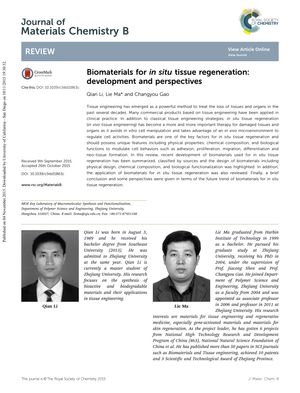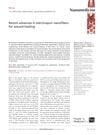Biomaterials for In Situ Tissue Regeneration: Development and Perspectives
January 2015
in “
Journal of Materials Chemistry B
”

TLDR Smart biomaterials that guide tissue repair are key for future medical treatments.
The 2015 review article discusses the role of biomaterials in in situ tissue regeneration, a process that leverages the body's own environment to repair damaged tissues without the need for in vitro cell manipulation. It covers the advancements in biomaterials based on their source, design, and application in regenerating tissues like bone, cartilage, skin, and nerves. The review emphasizes the importance of biomaterial characteristics such as microstructure, mechanical properties, biodegradability, and the ability to direct cell behavior. It mentions specific materials like collagen, chitosan, hyaluronic acid, PLA, PLGA, and PCL, as well as the use of bioceramics and ECM-based materials. The review also highlights the significance of chemical composition, surface functional groups, and biological functionalization in scaffold performance. It discusses strategies like the use of gradient signals and recruitment of endogenous stem cells for tissue regeneration. The document concludes that the development of "smart biomaterials" that provide instructive cues is crucial for the future of in situ tissue regeneration, and it points to the potential of these materials in clinical applications.



